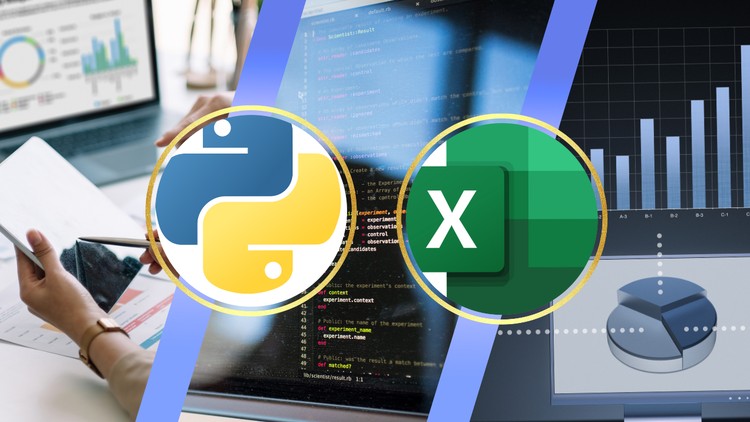
Mastering Complex Accounting Tasks with Python and Excel.
What you will learn
Python for Data Manipulation
Automate Complex Excel Workflows
Automate Excel reports, dashboards, and reconciliations using Python
Create reusable Python scripts for common accounting tasks
Schedule scripts to run automatically using task schedulers
Python for Functions and Loops
Python for Variables and Data Type
Add-On Information:
Note➛ Make sure your 𝐔𝐝𝐞𝐦𝐲 cart has only this course you're going to enroll it now, Remove all other courses from the 𝐔𝐝𝐞𝐦𝐲 cart before Enrolling!
- Course Caption: Mastering Complex Accounting Tasks with Python and Excel.
- This advanced course empowers finance professionals, accountants, and data analysts to transform their daily operations by leveraging Python for sophisticated Excel automation. Move beyond manual tasks to build intelligent, robust, and scalable solutions, enhancing accuracy and efficiency in critical accounting functions.
- Key Learning Outcomes:
- Robust Data Validation: Implement Python logic for automated error detection and flagging across vast Excel datasets, ensuring impeccable data integrity for compliance and financial reporting.
- Complex Reconciliations: Develop Python scripts for multi-criteria matching, variance analysis, and automated reconciliation across disparate Excel files, streamlining inter-company transactions and bank statements.
- Dynamic Dashboards & Reporting: Craft interactive, customisable Excel dashboards directly from Python, enabling real-time financial insights and automating the secure distribution of executive-ready reports.
- Advanced Excel Features via Python: Master programmatic interaction with Excel’s powerful features like pivot tables, advanced formulas, conditional formatting, and data tables through Python for deeper analysis.
- Audit-Ready Workflows: Design Python solutions incorporating robust logging, comprehensive error handling, and version control, ensuring transparency, traceability, and compliance for all automated accounting processes.
- Integrating External Data: Seamlessly connect your Excel-Python ecosystem with external databases, APIs, or web sources to pull market data or financial information, significantly enriching accounting models and forecasts.
- Scalable & Maintainable Solutions: Learn best practices for structuring Python code, documenting processes, and designing modular scripts, allowing for easy updates and collaborative development of automation projects.
- Streamlining Period-End Closings: Automate repetitive tasks for month-end or year-end closes, such as trial balance generation, accruals, and journal entry postings, drastically reducing manual effort and errors.
- Pros of this Course:
- Significant Time Savings: Drastically reduce hours spent on repetitive, manual Excel tasks, freeing up valuable time for strategic analysis and higher-value activities.
- Enhanced Accuracy & Reliability: Minimize human error in data processing, reconciliation, and reporting, leading to more dependable financial outcomes and greater confidence in your data.
- Career Advancement & Strategic Focus: Acquire highly sought-after technical skills that bridge finance and technology, significantly boosting your professional profile and enabling a shift from tactical tasks to strategic decision-making.
- Cons of this Course:
- Prerequisite Knowledge: While comprehensive, the course assumes a foundational understanding of both Python basics and intermediate Excel functionalities, which might present a steep initial learning curve for absolute beginners in either domain.
English
language